Quantitative Evaluation of China’s CSR Policies Based on the PMC-Index Model
Abstract
1. Introduction
2. Literature Review
2.1. Mechanism of CSRPs
2.1.1. The Status and Role of CSRPs
2.1.2. Basic Functions and Implementation Methods of China’s CSRPs
2.2. Research Status of China’s CSRPs
3. Research Design
3.1. Data Sources
3.2. High-Frequency Word Analysis
3.3. Establishment of the PMC-Index Model
3.4. Selection of Policy Samples
3.5. Calculation and Visualization of the PMC-Index
4. Results and Discussion
4.1. The PMC-Index of the Policies
4.2. The PMC-Surface of the Policies
4.3. Quantitative Evaluation Analysis of the Six CSRPs
4.4. Discussion and Suggestions
5. Conclusions
5.1. Theoretical and Practical Implications
5.2. Research Limitation and Future Research
Author Contributions
Funding
Institutional Review Board Statement
Informed Consent Statement
Data Availability Statement
Conflicts of Interest
Appendix A
| P1 | P2 | P3 | P4 | P5 | P6 | ||
|---|---|---|---|---|---|---|---|
| X1 | X1:1 | 1 | 1 | 1 | 1 | 1 | 1 |
| X1:2 | 1 | 1 | 1 | 1 | 1 | 1 | |
| X1:3 | 1 | 1 | 1 | 1 | 1 | 1 | |
| X2 | X2:1 | 1 | 0 | 0 | 0 | 0 | 0 |
| X2:2 | 1 | 1 | 1 | 1 | 1 | 1 | |
| X2:3 | 1 | 1 | 1 | 1 | 1 | 1 | |
| X3 | X3:1 | 1 | 0 | 0 | 1 | 1 | 0 |
| X3:2 | 0 | 0 | 1 | 1 | 1 | 0 | |
| X3:3 | 0 | 0 | 0 | 1 | 1 | 1 | |
| X3:4 | 0 | 1 | 0 | 1 | 1 | 0 | |
| X4 | X4:1 | 1 | 1 | 1 | 1 | 0 | 1 |
| X4:2 | 0 | 0 | 1 | 1 | 0 | 0 | |
| X4:3 | 1 | 1 | 1 | 1 | 1 | 1 | |
| X4:4 | 1 | 1 | 1 | 1 | 1 | 1 | |
| X5 | X5:1 | 1 | 1 | 1 | 1 | 1 | 1 |
| X5:2 | 1 | 1 | 1 | 1 | 1 | 0 | |
| X5:3 | 1 | 1 | 1 | 1 | 1 | 1 | |
| X5:4 | 1 | 1 | 1 | 1 | 1 | 1 | |
| X5:5 | 1 | 1 | 1 | 1 | 1 | 1 | |
| X6 | X6:1 | 1 | 1 | 1 | 1 | 1 | 1 |
| X6:2 | 0 | 0 | 0 | 0 | 0 | 1 | |
| X7 | X7:1 | 1 | 1 | 1 | 1 | 1 | 1 |
| X7:2 | 1 | 1 | 1 | 1 | 1 | 1 | |
| X7:3 | 1 | 1 | 1 | 1 | 1 | 1 | |
| X7:4 | 1 | 1 | 1 | 1 | 1 | 1 | |
| X7:5 | 1 | 1 | 1 | 1 | 1 | 1 | |
| X7:6 | 1 | 1 | 1 | 1 | 1 | 1 | |
| X7:7 | 0 | 0 | 1 | 1 | 1 | 1 | |
| X8 | X8:1 | 1 | 1 | 1 | 0 | 0 | 1 |
| X8:2 | 1 | 1 | 1 | 0 | 0 | 1 | |
| X8:3 | 1 | 1 | 1 | 0 | 0 | 1 | |
| X8:4 | 0 | 1 | 1 | 0 | 0 | 1 | |
| X8:5 | 0 | 1 | 1 | 0 | 0 | 1 | |
| X8:6 | 1 | 1 | 1 | 0 | 0 | 1 | |
| X9 | X9:1 | 0 | 1 | 1 | 1 | 1 | 0 |
| X9:2 | 0 | 1 | 1 | 1 | 1 | 0 | |
| X9:3 | 0 | 0 | 1 | 1 | 1 | 0 | |
| X9:4 | 0 | 0 | 1 | 1 | 1 | 0 | |
| X9:5 | 0 | 0 | 1 | 1 | 1 | 0 | |
| X9:6 | 0 | 0 | 0 | 1 | 1 | 0 | |
| X9:7 | 0 | 0 | 0 | 1 | 1 | 0 | |
| X9:8 | 0 | 0 | 1 | 1 | 1 | 0 | |
| X9:9 | 0 | 0 | 0 | 1 | 1 | 0 |
References
- Davis, K. Can business afford to ignore social responsibilities? Calif. Manag. Rev. 1960, 2, 70–76. [Google Scholar] [CrossRef]
- Dahlsrud, A. How corporate social responsibility is defined: An analysis of 37 definitions. Corp. Soc. Responsib. Environ. Manag. 2008, 15, 1–13. [Google Scholar] [CrossRef]
- Rodriguez-Gomez, S.; Arco-Castro, M.L.; Lopez-Perez, M.V.; Rodríguez-Ariza, L. Where does CSR come from and where does it go? A review of the state of the art. Adm. Sci. 2020, 10, 60. [Google Scholar] [CrossRef]
- Gomez-Carrasco, P.; Guillamon-Saorin, E.; Garcia, O.B. The illusion of CSR: Drawing the line between core and supplementary CSR. Sustain. Account. Manag. Policy J. 2016, 7, 125–151. [Google Scholar] [CrossRef]
- Sprinkle, G.B.; Maines, L.A. The benefits and costs of corporate social responsibility. Bus. Horizons. 2010, 53, 445. [Google Scholar] [CrossRef]
- Lopatta, K.; Canitz, F.; Tideman, S.A. Abnormal CSR and financial performance. Eur. Acc. Rev. 2022, 1–27. [Google Scholar] [CrossRef]
- Gond, J.P.; El Akremi, A.; Swaen, V.; Babu, N. The psychological micro foundations of corporate social responsibility: A person-centric systematic review. J. Organ. Behav. 2017, 38, 225–246. [Google Scholar] [CrossRef]
- Deng, D.; Wu, Y.; Qin, L. CSR preference, market competition, and corporate financial performance. Manag. Decis. Econ. 2022, 44, 1396–1409. [Google Scholar] [CrossRef]
- Deng, Z.; Jing, Y. The construction of the Chinese civil society. State and civil society: The Chinese perspective. World Sci. 2011, 25–46. [Google Scholar] [CrossRef]
- Hsu, J.Y. Chinese non-governmental organisations and civil society: A review of the literature. Geogr. Compass. 2014, 8, 98–110. [Google Scholar] [CrossRef]
- See, G.K.H. Harmonious society and Chinese CSR: Is there really a link? J. Bus. Ethics 2009, 89, 1–22. [Google Scholar] [CrossRef]
- Tang, Y.; Ma, Y.; Wong, C.W.; Miao, X. Evolution of government policies on guiding corporate social responsibility in China. Sustainability 2018, 10, 741. [Google Scholar] [CrossRef]
- Frynas, J.G.; Stephens, S. Political corporate social responsibility: Reviewing theories and setting new agendas. Int. J. Manag. Rev. 2015, 17, 483–509. [Google Scholar] [CrossRef]
- Yin, J.L.; Zhang, Y.L. Institutional dynamics and corporate social responsibility (CSR) in an emerging country context: Evidence from China. J. Bus. Ethics 2012, 111, 301–316. [Google Scholar] [CrossRef]
- Zaid, M.A.; Abuhijleh, S.T.; Pucheta-Martínez, M.C. Ownership structure, stakeholder engagement, and corporate social responsibility policies: The moderating effect of board independence. Corp. Soc. Responsib. Environ. Manag. 2020, 27, 1344–1360. [Google Scholar] [CrossRef]
- Knudsen, J.S.; Brown, D. Why governments intervene: Exploring mixed motives for public policies on CSR. Public Policy Adm. 2015, 30, 51–72. [Google Scholar] [CrossRef]
- Cominetti, M.; Seele, P. Hard soft law or soft hard law? A content analysis of CSR guidelines typologized along hybrid legal status. uwf UmweltWirtschaftsForum 2016, 24, 127–140. [Google Scholar] [CrossRef]
- Long, W.; Li, S.; Wu, H.; Song, X. Corporate social responsibility and financial performance: The roles of government intervention and market competition. Corp. Soc. Responsib. Environ. Manag. 2020, 27, 525–541. [Google Scholar] [CrossRef]
- Xu, S.; Liu, D. Political connections and corporate social responsibility: Political incentives in China. Bus. Ethics Eur. Rev. 2020, 29, 664–693. [Google Scholar] [CrossRef]
- Luo, J.; Yi, L. Discussion on the Policy and Legal System to Improve the Fulfillment Level of Corporate Social Responsibility—Analysis Based on a Total Cost Model. Enterp. Econ. 2009, 4, 96–99. (In Chinese) [Google Scholar]
- Jin, R. Analysis and enlightenment of China’s corporate social responsibility policy. Soc. Sci. Beijing 2019, 8, 22–33. (In Chinese) [Google Scholar]
- Lungeanu, R.; Weber, K. Social responsibility beyond the corporate: Executive mental accounting across sectoral and issue domains. Organ Sci. 2021, 32, 1473–1491. [Google Scholar] [CrossRef]
- Zhao, X.; Wang, M.; Zhan, X.; Liu, Y. The Mechanisms of Chief Executive Officer Characteristics and Corporate Social Responsibility Reporting: Evidence from Chinese-Listed Firms. Front Psychol. 2022, 13, 794258. [Google Scholar] [CrossRef]
- Hsieh, Y.C.; Weng, J.; Pham, N.T.; Yi, L.H. What drives employees to participate in corporate social responsibility? A personal characteristics-CSR capacity-organizational reinforcing model of employees’ motivation for voluntary CSR activities. Int. J. Hum. Resour Manag. 2022, 33, 3703–3735. [Google Scholar] [CrossRef]
- Minor, D.; Morgan, J. CSR as reputation insurance: Primum non nocere. Calif. Manag. Rev. 2011, 53, 40–59. [Google Scholar] [CrossRef]
- Kuokkanen, H.; Sun, W. Companies, meet ethical consumers: Strategic CSR management to impact consumer choice. J. Bus. Ethics 2020, 166, 403–423. [Google Scholar] [CrossRef]
- Mutuc, E.B.; Cabrilo, S. Corporate social responsibility, intellectual capital and financial performance: Evidence from developed and developing Asian economies. Rev. Manag. Sci. 2022, 16, 1227–1267. [Google Scholar] [CrossRef]
- Jan, A.A.; Lai, F.W.; Tahir, M. Developing an Islamic Corporate Governance framework to examine sustainability performance in Islamic Banks and Financial Institutions. J. Clean. Prod. 2021, 315, 128099. [Google Scholar] [CrossRef]
- Jan, A.A.; Lai, F.W.; Asif, M.; Akhtar, S.; Ullah, S. Embedding sustainability into bank strategy: Implications for sustainable development goals reporting. Int J. Sustain. Dev. World 2023, 30, 229–243. [Google Scholar] [CrossRef]
- Parsa, S.; Dai, N.; Belal, A.; Li, T.; Tang, G. Corporate social responsibility reporting in China: Political, social and corporate influences. Account. Bus. Res. 2021, 51, 36–64. [Google Scholar] [CrossRef]
- Aguilera, R.; Rupp, D.; Williams, C. Putting the S back in corporate social responsibility: A multilevel theory of social change in organizations. Acad. Manag. Rev. 2007, 32, 836–863. [Google Scholar] [CrossRef]
- Muller, A.; Kolk, A. Extrinsic and Intrinsic Drivers of Corporate Social Performance: Evidence from Foreign and Domestic Firms in Mexico. J. Manag. Stud. 2010, 47, 1–26. [Google Scholar] [CrossRef]
- Kostova, T.; Roth, K.; Dacin, M. Institutional theory in the study of multinational corporations: A critique and new directions. Acad. Manag. Rev. 2008, 33, 994–1006. [Google Scholar] [CrossRef]
- Scott, W. Institutions and Organizations: Ideas and Interests; Sage Publications: Thousand Oaks, CA, USA, 2008. [Google Scholar]
- Yang, Y.; Huang, J.; Jia, Y. The Sources of Social Responsibility of Food Enterprise. Soft. Sci. 2015, 29, 15–18. (In Chinese) [Google Scholar]
- Scherer, A.G. Theory assessment and agenda setting in political CSR: A critical theory perspective. Int. J. Manag. Rev. 2018, 20, 387–410. [Google Scholar] [CrossRef]
- Hofman, P.S.; Moon, J.; Wu, B. Corporate social responsibility under authoritarian capitalism: Dynamics and prospects of state-led and society-driven CSR. Bus. Soc. 2017, 56, 651–671. [Google Scholar] [CrossRef]
- Wang, Z.; Reimsbach, D.; Braam, G. Political embeddedness and the diffusion of corporate social responsibility practices in China: A trade-off between financial and CSR performance? J. Clean. Prod. 2018, 198, 1185–1197. [Google Scholar] [CrossRef]
- Shamir, R. ‘The Age of Responsibilization: On Market-Embedded Morality’. Econ. Soc. 2008, 37, 1–19. [Google Scholar] [CrossRef]
- ElAlfy, A.; Palaschuk, N.; El-Bassiouny, D.; Wilson, J.; Weber, O. Scoping the Evolution of Corporate Social Responsibility (CSR) Research in the Sustainable Development Goals (SDGs) Era. Sustainability 2020, 12, 5544. [Google Scholar] [CrossRef]
- Alwyn, L.; Shawn, P. Three Types of Organizational Boundary Spanning: Predicting CSR Policy Extensiveness Among Global Consumer Products Companies. Bus. Ethics 2020, 29, 451–470. [Google Scholar]
- Marquis, C.; Qian, C. Corporate Social Responsibility Reporting in China: Symbol or Substance? Organ. Sci. 2014, 25, 127–148. [Google Scholar] [CrossRef]
- Vallentin, S.; Murillo, D. Governmentality and the politics of CSR. Organization 2012, 19, 825–843. [Google Scholar] [CrossRef]
- Conley, J.; Williams, C. Engage, embed, and embellish Theory vs. practice in the corporate social responsibility movement. J. Corp. L. 2007, 31, 1–38. [Google Scholar]
- Lozano, J.; Albareda, L.; Ysa, T.; Roscher, H.; Marcuccio, M. Governments and Corporate Social Responsibility: Public Policies Beyond Regulation and Voluntary Compliance; Palgrave Macmillan: London, UK, 2007. [Google Scholar]
- Steurer, R. The role of governments in corporate social responsibility: Characterising public policies on CSR in Europe. Policy Sci. 2010, 43, 49–72. [Google Scholar] [CrossRef]
- Steurer, R.; Martinuzzi, A.; Margula, S. Public policies on CSR in Europe: Themes, instruments, and regional differences. Corp. Soc. Responsib. Environ. Manag. 2011, 19, 206–227. [Google Scholar] [CrossRef]
- Matten, D.; Moon, J. “Implicit” and “Explicit” CSR: A conceptual framework for a comparative understanding of corporate social responsibility. Acad. Manag. Rev. 2008, 33, 404–424. [Google Scholar] [CrossRef]
- Zhong, Y.; Xiang, C. On the soft law regulation path of corporate social responsibility. Stat. Decis. 2015, 9, 83–87. (In Chinese) [Google Scholar]
- Sindico, F. Soft law and the elusive quest for sustainable global governance. Leiden. J. Int. Law. 2006, 19, 829–846. [Google Scholar] [CrossRef]
- Qazi, A.A.; Shaikh, A.R.; Appolloni, A. Blow the whistle or dance to a tune! An ethical dilemma. Emerg. Mark. Case Stud. 2021, 11, 1–18. [Google Scholar] [CrossRef]
- Dentchev, N.; van Balen, M.; Haezendonck, E. On voluntarism and the role of governments in CSR: Towards a contingency approach. Bus. Ethics A Eur. Rev. 2014, 24, 378–397. [Google Scholar] [CrossRef]
- Huang, X. Corporate Social Responsibility Policy from the Perspective of Evolutionary Economics. Econ. Rev. 2007, 4, 129–137. (In Chinese) [Google Scholar]
- Lou, J. Implementation of corporate social responsibility: Legal compulsion, policy guidance, moral persuasion. China Yearbook Commer. Law 2009, 0, 219–222. (In Chinese) [Google Scholar]
- Yang, Y.; Luo, S. Analysis of Corporate Social Responsibility Guided by Local Policies and Regulations. Co-oper. Econ. Sci. 2017, 1, 186–188. (In Chinese) [Google Scholar]
- Mario, A.R.E. Policy modeling: Definition, classification and devaluation. J. Policy Model. 2011, 33, 523–526. [Google Scholar]
- Ruiz, A. The Policy Modeling Research Consistency Index (PMC-Index). 2010. Available online: https://papers.ssrn.com/sol3/papers.cfm?abstract_id=1689475 (accessed on 15 March 2023).
- Liu, F.; Liu, Z. Quantitative Evaluation of Waste Separation Management Policies in the Yangtze River Delta Based on the PMC Index Model. Int. J. Environ. Res. Public Health 2022, 19, 3815. [Google Scholar] [CrossRef] [PubMed]
- Liu, Y.; Li, J.; Xu, Y. Quantitative evaluation of high-tech industry policies based on the PMC-Index model: A case study of China’s Beijing-Tianjin-Hebei region. Sustainability 2022, 14, 9338. [Google Scholar] [CrossRef]
- Kuang, B.; Han, J.; Lu, X.; Zhang, X.; Fan, X. Quantitative evaluation of China’s cultivated land protection policies based on the PMC-Index model. Land. Use Policy. 2020, 99, 105062. [Google Scholar] [CrossRef]
- Liu, J.; Mao, H. Evaluation of fire safety management policy based on PMC index model. Fire Sci. Technol. 2021, 40, 1405. [Google Scholar]
- ISO 26000 Social Responsibility. Available online: https://www.iso.org/iso-26000-social-responsibility.html (accessed on 15 March 2023).
- Zamir, F.; Saeed, A. Location matters: Impact of geographical proximity to financial centers on corporate social responsibility (CSR) disclosure in emerging economies. Asia Pac. J. Manag. 2020, 37, 263–295. [Google Scholar] [CrossRef]
- Moon, J. The contribution of corporate social responsibility to sustainable development. Sustain. Dev. 2007, 15, 296–306. [Google Scholar] [CrossRef]
- Lin, K.; Lu, X.; Zhang, J. State-owned enterprises in China: A review of 40 years of research and practice. China J. Account. Res. 2020, 13, 31–55. [Google Scholar] [CrossRef]
- Khan, F.; Zhang, J.; Usman, M. Ownership Reduction in state-owned enterprises and corporate social responsibility: Perspective from secondary privatization in China. Sustainability 2019, 11, 1008. [Google Scholar] [CrossRef]
- Zheng, H.; Zhang, Y. Do SOEs outperform private enterprises in CSR? Evidence from China. Chin. Manag. Stud. 2016, 10, 435–457. [Google Scholar] [CrossRef]
- Yao, Z.; Zhang, Z.; Ma, J. Party branches, policy perception and corporate social responsibility: Evidence from Chinese private enterprises. Front. Psychol. 2022, 13, 1048060. [Google Scholar] [CrossRef]
- Ghazinoory, S.; Aghaei, P. Differences between policy assessment & policy evaluation; a case study on supportive policies for knowledge-based firms. Technol. Forecast. Soc. Chang. 2021, 169, 120801. [Google Scholar]
- Kraft, M.; Furlong, S.R. Public Policy: Politics, Analysis, and Alternatives; Cq Press: Washington, DC, USA, 2019. [Google Scholar]
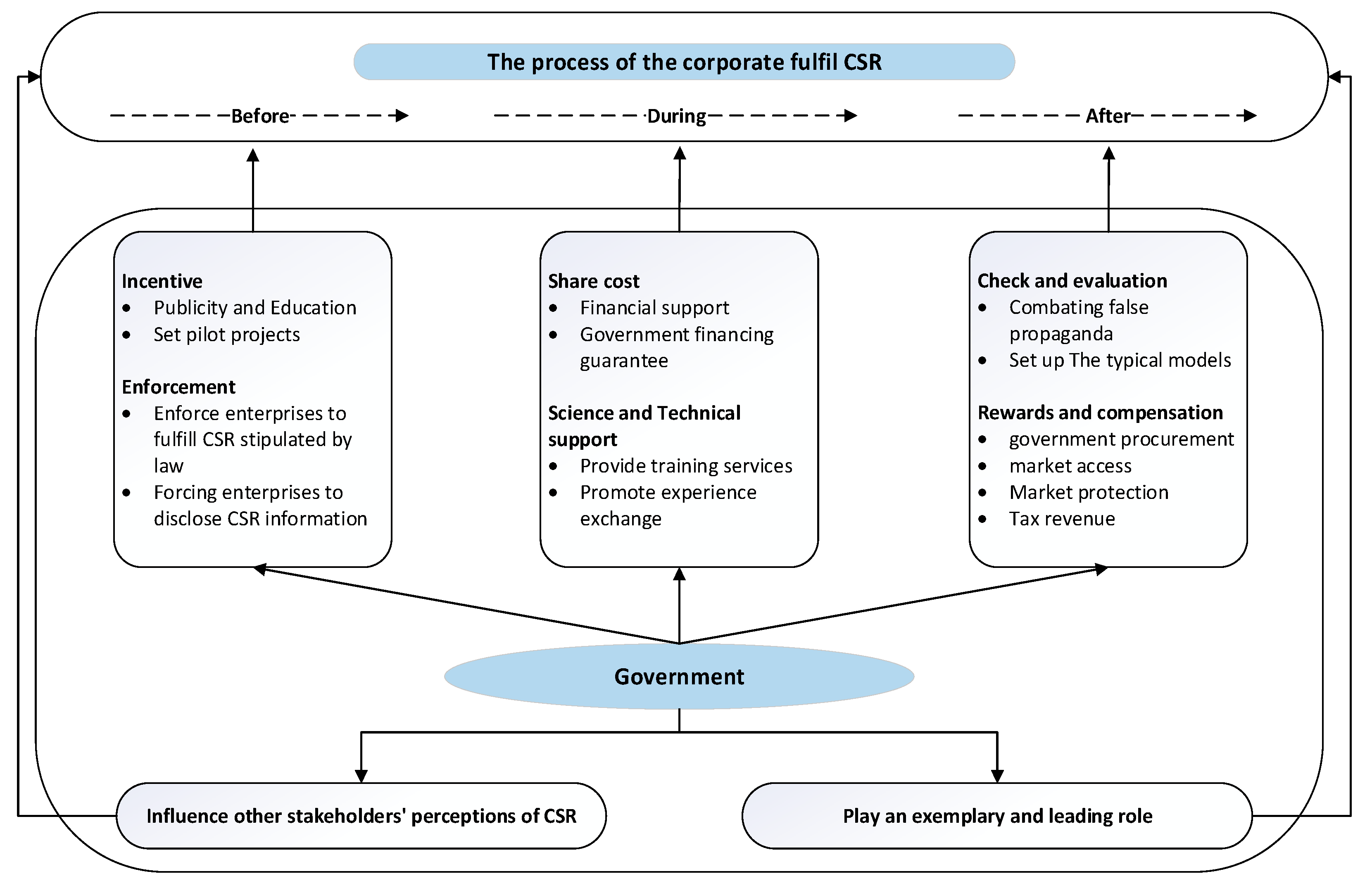
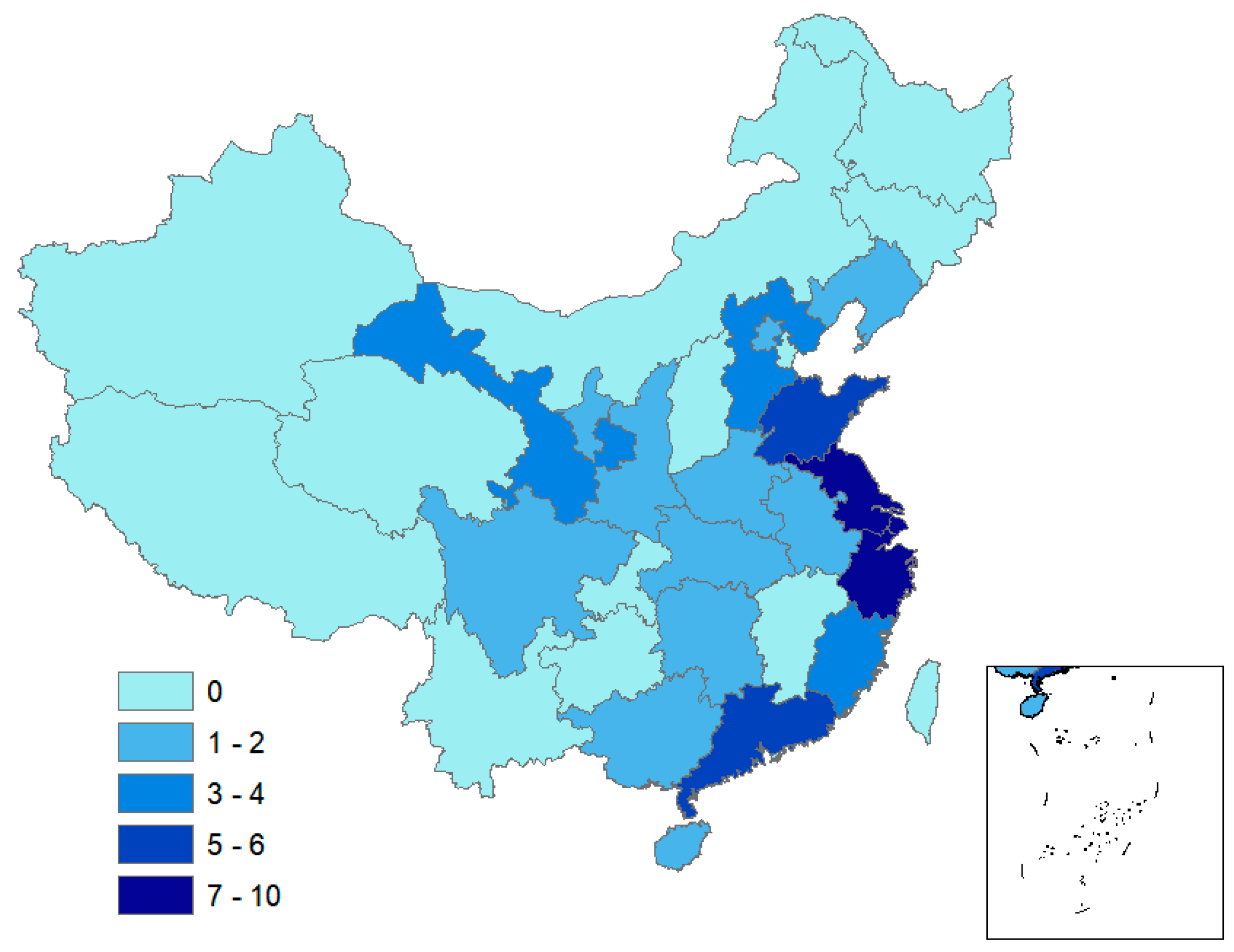
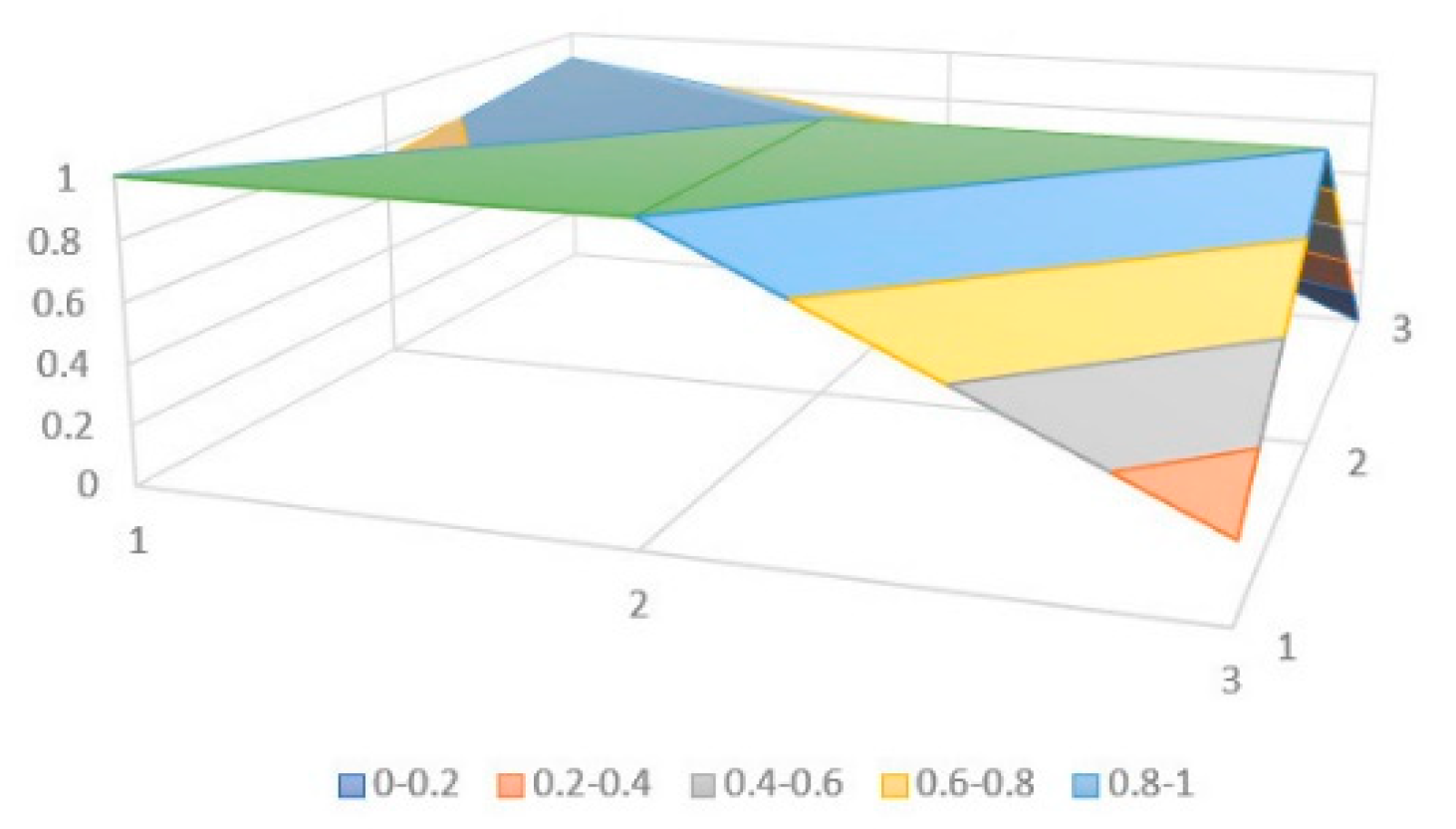
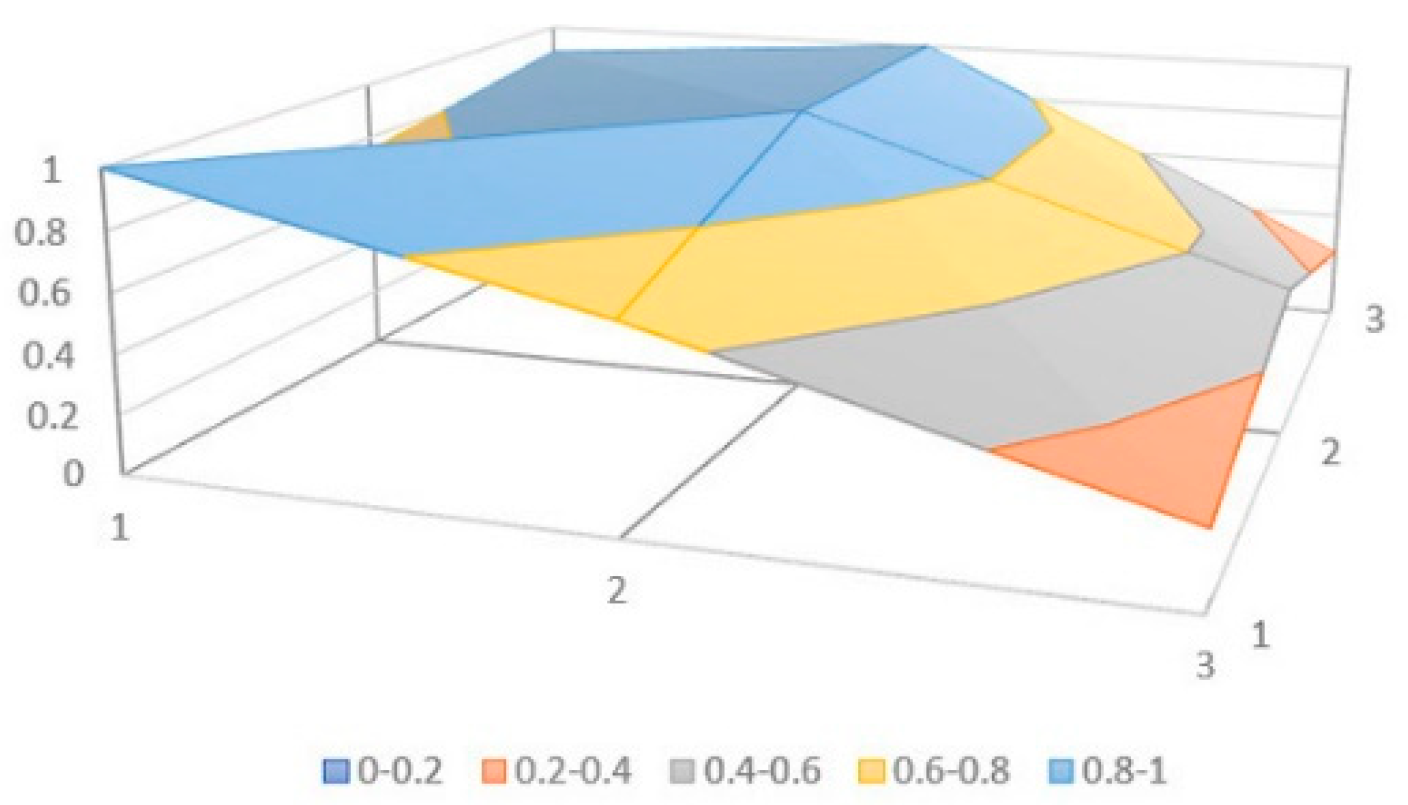
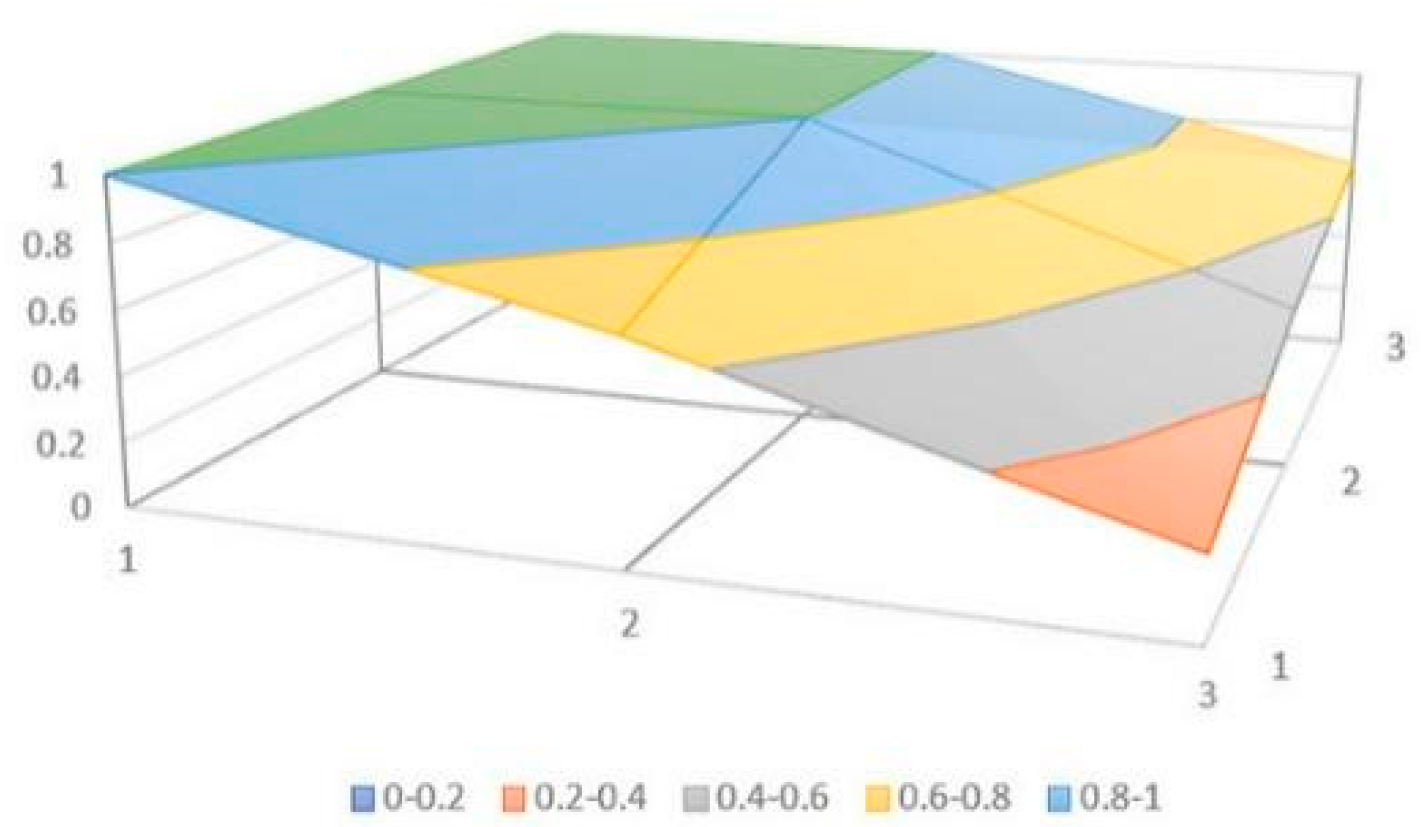
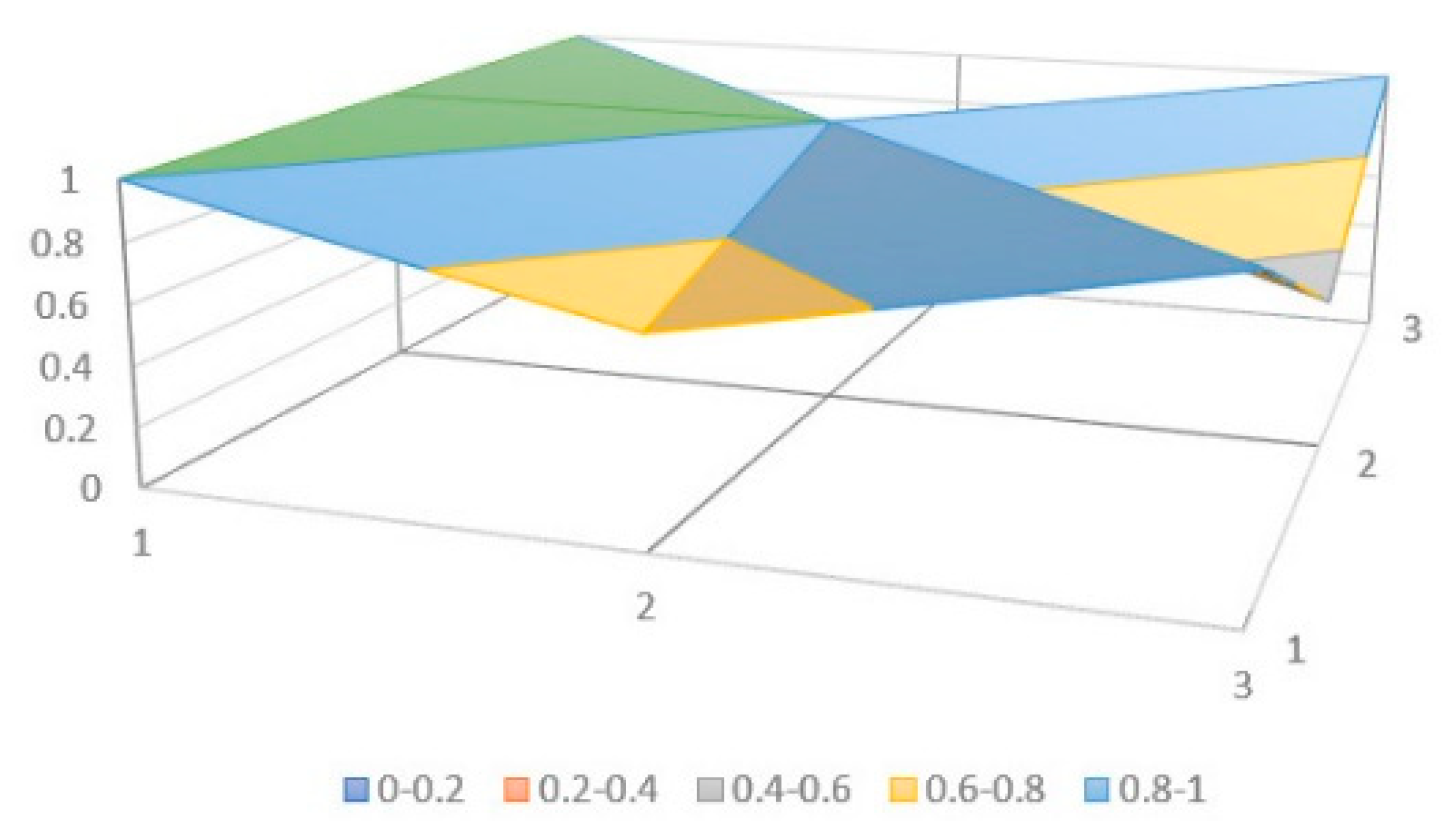
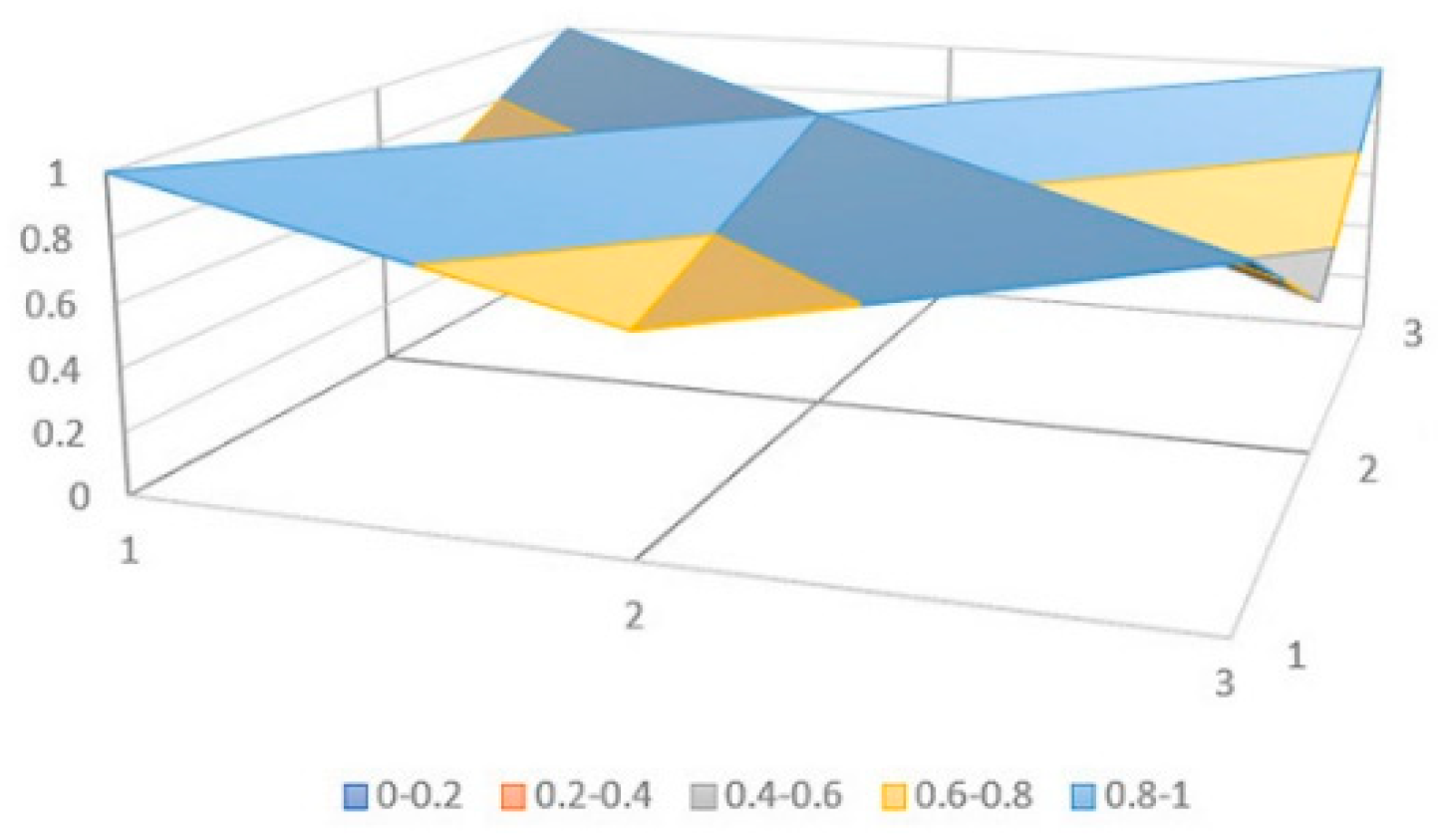
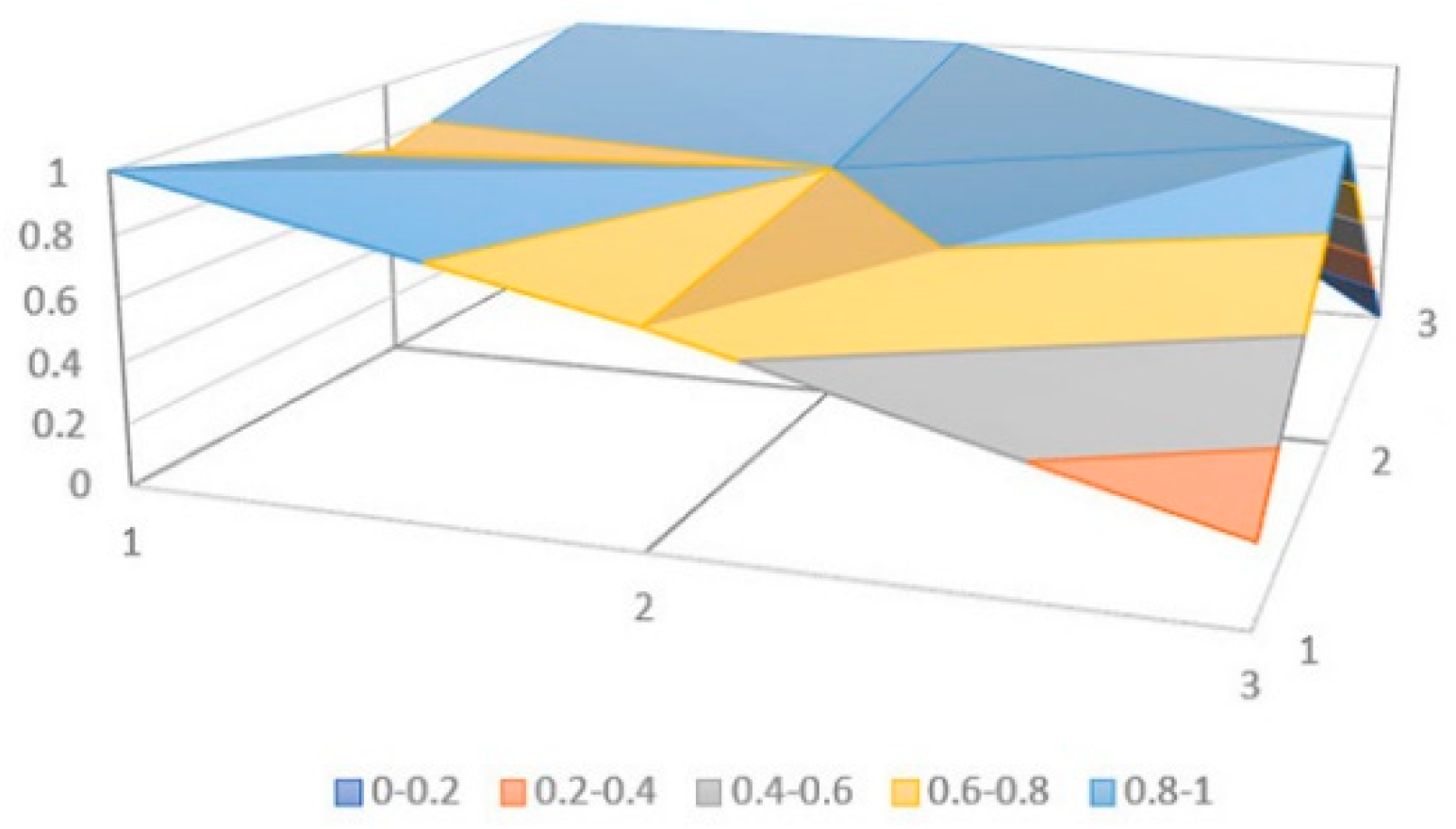
| Word | Word Frequency | Word | Word Frequency | Word | Word Frequency | Word | Word Frequency |
|---|---|---|---|---|---|---|---|
| build | 1098 | service | 311 | government | 213 | country | 182 |
| perform | 986 | economics | 303 | innovate | 212 | develop | 180 |
| staff | 718 | organization | 299 | resources | 209 | regulations | 178 |
| development | 667 | develop | 282 | report | 209 | law | 178 |
| advance | 573 | guide | 263 | should | 208 | New Area | 177 |
| administration | 582 | promote | 261 | participate | 207 | association | 175 |
| mechanism | 532 | protect | 252 | standard | 203 | according to law | 171 |
| environment | 500 | consumer | 251 | supervise | 202 | encourage | 168 |
| positive | 429 | department | 247 | policy | 198 | guidance | 165 |
| evaluate | 571 | mechanism | 246 | credit | 197 | full | 161 |
| strengthen | 367 | increase | 239 | opinion | 196 | sincerity | 160 |
| finance | 365 | harmonious | 238 | perfect | 187 | train | 156 |
| management | 354 | guarantee | 231 | measures | 186 | sustainable development | 152 |
| security | 325 | interest | 221 | system | 186 | insist | 152 |
| system | 320 | labor | 220 | implement | 183 | statute | 149 |
| First-Level Variables | Number | Second-Level Variables | Number | Second-Level Variables |
|---|---|---|---|---|
| X1 Policy timeliness | X1:1 | Short-term (<3 years) | X1:2 | Medium-term (3–5 years) |
| X1:3 | Long-term (>5 years) | |||
| X2 Policy subjects | X2:1 | National level | X2:2 | Provincial and municipal level |
| X2:3 | District and county level | |||
| X3 Policy objects | X3:1 | Central enterprises | X3:2 | State-owned enterprise |
| X3:3 | Private enterprise | X3:4 | Others | |
| X4 Content evaluation | X4:1 | Scientific basis | X4:2 | Specific goals |
| X4:3 | Reasonable scheme | X4:4 | Scientific program | |
| X5 Policy nature | X5:1 | Forecast | X5:2 | Supervise |
| X5:3 | Guide | X5:4 | Suggest | |
| X5:5 | Describe | |||
| X6 Policy perspective | X6:1 | Macro | X6:2 | Micro |
| X7 Policy content | X7:1 | Operate in good faith according to the law | X7:2 | Safe production |
| X7:3 | Economic responsibility | X7:4 | Labor relations | |
| X7:5 | Protection of consumers’ rights | X7:6 | Community participation and development | |
| X7:7 | Independent innovation and technological progress | X7:8 | Energy conservation and environmental protection | |
| X7:9 | Others | |||
| X8 Implementation suggestions | X8:1 | Enhance the enterprise’s awareness of CSR | X8:2 | Actively disclose CSR information |
| X8:3 | Improve management mechanism | X8:4 | Establish communication and negotiation mechanism | |
| X8:5 | Improve operation management level | X8:6 | Integrate CSR into corporate culture | |
| X8:7 | Others | |||
| X9 Incentives and constraints mechanism | X9:1 | Inspection and supervision | X9:2 | Compulsory enterprise disclosure of CSR information |
| X9:3 | Spiritual rewards | X9:4 | Financial subsidies | |
| X9:5 | Priority support | X9:6 | Construction pilot | |
| X9:7 | Publicity and education | X9:8 | Improve the policy system | |
| X9:9 | Others | |||
| X10 Policy disclosure |
| Label | Policy Name | Release Agency | Release Time |
|---|---|---|---|
| P1 | Guiding Opinions on the Performance of Social Responsibilities by Central Enterprises | State-owned assets supervision and administration commission | 2008 |
| P2 | Guiding Opinions on the Implementation of Social Responsibilities by Provincial Enterprises | Shandong Provincial People’s Government | 2011 |
| P3 | Guiding Opinions on Better Performance of Social Responsibilities by State-owned Enterprises in the Region | People’s Government of Guangxi Zhuang Autonomous Region | 2015 |
| P4 | Guiding Opinions on Corporate Social Responsibility Construction in Jiangsu Province | Jiangsu Provincial Government | 2017 |
| P5 | Opinions of the General Office of Changsha Municipal People’s Government on Strengthening the Construction of Corporate Social Responsibility | Changsha Municipal People’s Government | 2012 |
| P6 | Guidelines for Social Responsibility Evaluation of Henan Private Enterprises | Market Supervision and Administration Bureau of Henan Province | 2020 |
| PMC-Index | 10~9 | 8.99~7 | 6.99~5 | 4.99~0 |
|---|---|---|---|---|
| Evaluation grades | Perfect | Good | Acceptable | Low |
| P1 | P2 | P3 | P4 | P5 | P6 | Mean Value | |
|---|---|---|---|---|---|---|---|
| X1 Policy timeliness | 1 | 1 | 1 | 1 | 1 | 1 | 1 |
| X2 Policy subjects | 1 | 0.67 | 0.67 | 0.67 | 0.67 | 0.67 | 0.73 |
| X3 Policy objects | 0.25 | 0.25 | 0.25 | 1 | 1 | 0.25 | 0.5 |
| X4 Content evaluation | 0.75 | 0.75 | 1 | 1 | 0.5 | 0.75 | 0.79 |
| X5 Policy nature | 1 | 1 | 1 | 1 | 1 | 0.8 | 0.97 |
| X6 Policy perspective | 0.5 | 0.5 | 0.5 | 0.5 | 0.5 | 1 | 0.58 |
| X7 Policy content | 0.89 | 0.89 | 1 | 1 | 1 | 1 | 0.96 |
| X8 Implementation suggestions | 0.67 | 1 | 1 | 0 | 0 | 1 | 0.61 |
| X9 Incentives and constraints mechanism | 0 | 0.25 | 0.67 | 1 | 1 | 0 | 0.49 |
| X10 Policy disclosure | 1 | 1 | 1 | 1 | 1 | 1 | 1 |
| PMC-index | 7.06 | 7.31 | 8.09 | 8.17 | 7.67 | 7.47 | 7.63 |
| Ranking | 6 | 5 | 2 | 1 | 3 | 4 | — |
| Evaluation grades | Good | Good | Good | Good | Good | Good | — |
Disclaimer/Publisher’s Note: The statements, opinions and data contained in all publications are solely those of the individual author(s) and contributor(s) and not of MDPI and/or the editor(s). MDPI and/or the editor(s) disclaim responsibility for any injury to people or property resulting from any ideas, methods, instructions or products referred to in the content. |
© 2023 by the authors. Licensee MDPI, Basel, Switzerland. This article is an open access article distributed under the terms and conditions of the Creative Commons Attribution (CC BY) license (https://creativecommons.org/licenses/by/4.0/).
Share and Cite
Zhang, Y.; Wang, T.; Wang, C.; Cheng, C. Quantitative Evaluation of China’s CSR Policies Based on the PMC-Index Model. Sustainability 2023, 15, 7194. https://doi.org/10.3390/su15097194
Zhang Y, Wang T, Wang C, Cheng C. Quantitative Evaluation of China’s CSR Policies Based on the PMC-Index Model. Sustainability. 2023; 15(9):7194. https://doi.org/10.3390/su15097194
Chicago/Turabian StyleZhang, Yukuo, Teng Wang, Chunbao Wang, and Changgao Cheng. 2023. "Quantitative Evaluation of China’s CSR Policies Based on the PMC-Index Model" Sustainability 15, no. 9: 7194. https://doi.org/10.3390/su15097194
APA StyleZhang, Y., Wang, T., Wang, C., & Cheng, C. (2023). Quantitative Evaluation of China’s CSR Policies Based on the PMC-Index Model. Sustainability, 15(9), 7194. https://doi.org/10.3390/su15097194






